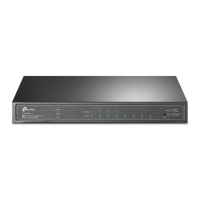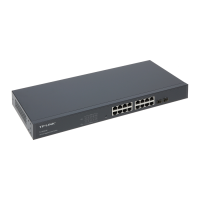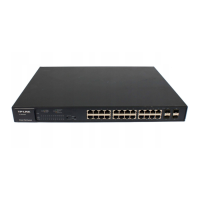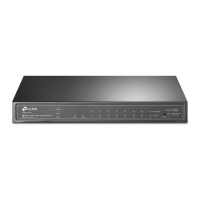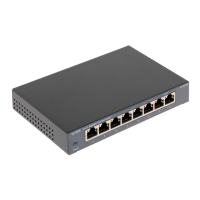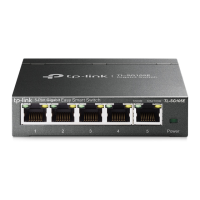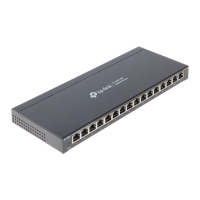98
¾ Priority Level
DSCP: Indicates the priority determined by the DS region of IP datagram.
It ranges from 0 to 63.
Priority Level: Indicates the priority level the packets with tag are mapped to. The
priority levels are labeled as TC0, TC1, TC2 and TC3.
Note:
To complete QoS function configuration, you have to go to the Schedule Mode page to select a
schedule mode after the configuration is finished on this page.
Configuration procedure:
Step Operation Description
1 Log on to the DSCP Priority page
2 Enable DP priority function Required. By default, the DSCP priority function is
disabled.
3 Map the DSCP priority to the
priority level
Required. Select DSCP priority and the
corresponding priority level.
4 Select a schedule mode Required. Log on to the Schedule Mode page to
select a schedule mode.
9.1.4 Schedule Mode
On this page you can select a schedule mode for the switch. When the network is congested, the
problem that many packets compete for resources must be solved, usually in the way of queue
scheduling. The switch will control the forwarding sequence of the packets according to the priority
queues and scheduling algorithms you set. On this switch, the priority levels are labeled as TC0,
TC1… TC3.
Choose the menu QoS→DiffServ→Schedule Mode to load the following page.
Figure 9-9 Schedule Mode
The following entries are displayed on this screen:
¾ Schedule Mode Config
SP-Mode: Strict-Priority Mode. In this mode, the queue with higher priority
will occupy the whole bandwidth. Packets in the queue with lower
priority are sent only when the queue with higher priority is empty.
WRR-Mode: Weight Round Robin Mode. In this mode, packets in all the
queues are sent in order based on the weight value for each
queue. The weight value ratio of TC0, TC1, TC2 and TC3 is
1:2:4:8.
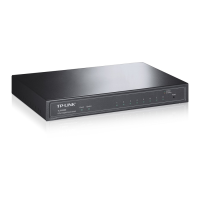
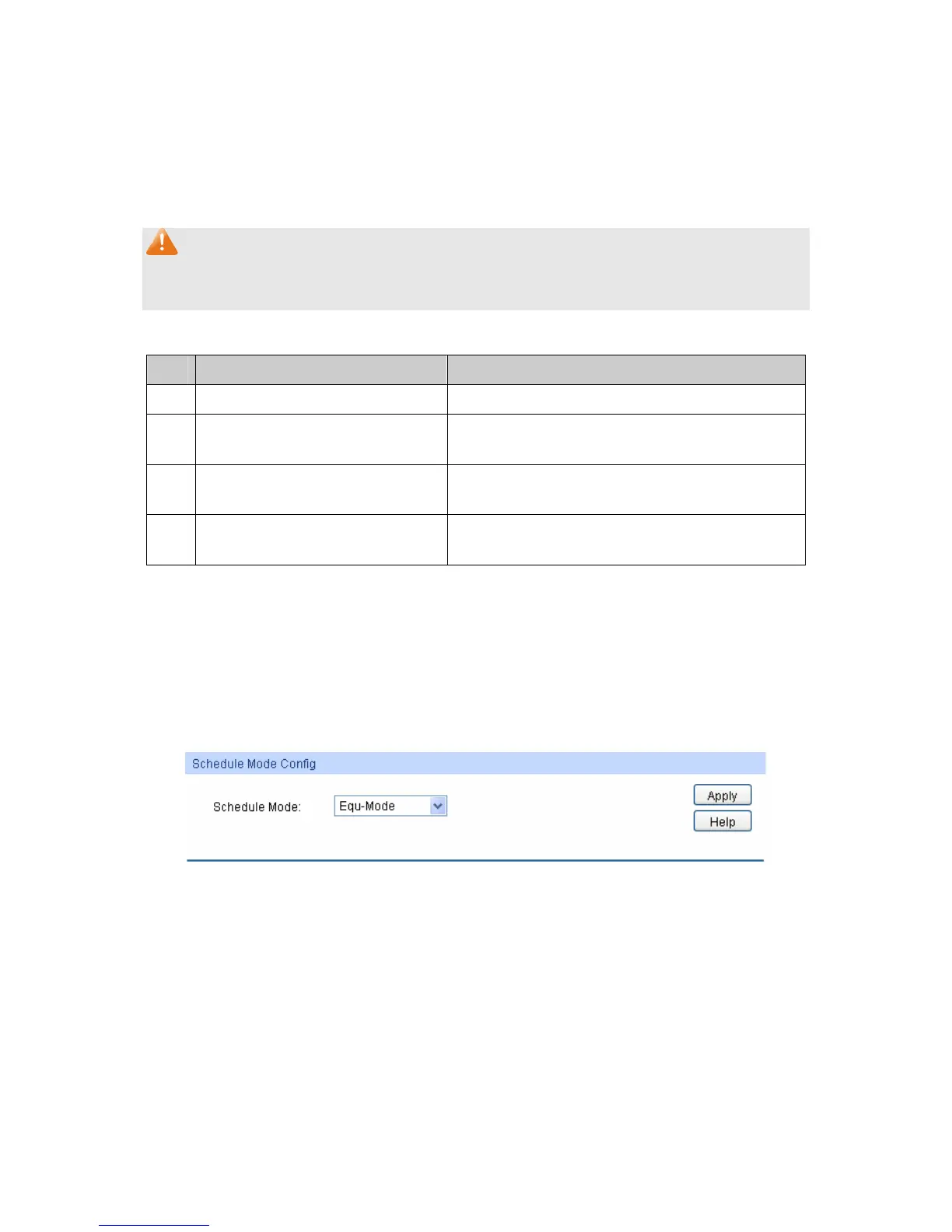